Force Feedback and Virtual Reality
One
of the challenges in computational structural biology is to enable the
efficient use and inter-operation of a diverse set of techniques to
simulate, analyze, model, and visualize the complex architecture and
interactions of macromolecular systems. Our latest development effort
will permit scientists to build models, combine atomic and volumetric
data, and perform morphing and warping (flexible docking) interactively
within a single computational environment. We are developing a 3D
graphics extension for Situs, termed 'Sculptor',
that is capable of supporting virtual reality (VR) devices such as
stereo glasses, 3D trackers, and force-feedback (haptic) devices. (see
Figure). A force feedback device measures a user's hand position and
exerts a precisely controlled force on the hand. Our software supports
this by calculating forces according to the correlation coefficient of
density maps and crystallographic data. The high sampling frequency
required for force feedback (refresh rate > 1kHz) is achieved by
means of the vector quantization algorithm developed in our group that reduces the complexity of the data representation to manageable levels.
In
addition to automated fitting, microscopists have a need to evaluate
and manipulate docking models interactively "by eye". 3D capabilities
and the "physics of touch" offer tangible benefits for modelers who
wish to explore a variety of docking situations in a VR environment.
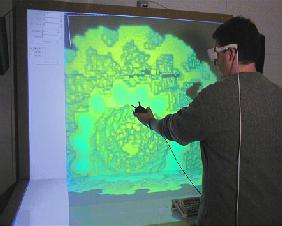
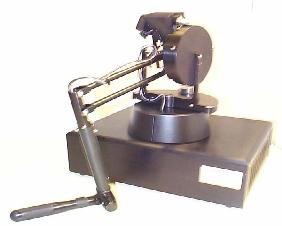
Interactive
rendering of a microtubule data set in an immersive VR environment with
Sculptor (left). The platform-independent, OpenGL-based graphics
library supporting the software was developed in collaboration with
Forschungszentrum Jülich, Germany. EM- and molecule-specific data
interfaces and a Phantom 6-DOF force-feedback device (right) are implemented in the Houston lab.

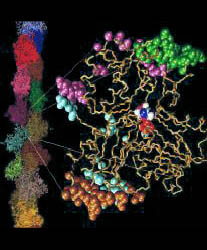
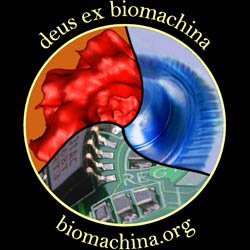
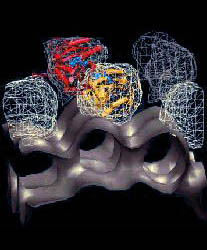
![]()



![]()


![]()